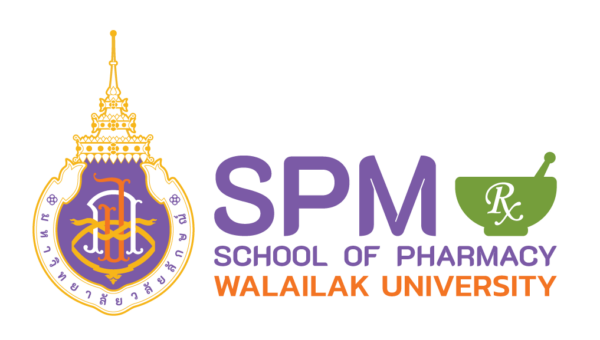ผลงานเรื่อง Stability study of anti-knee-arthritis herbal plaster formulation used in Kiriratnikom hospital, Surat Thani, Thailand โดยนักศึกษาชื่อ นศภ.พรวสุ พงศ์ธีระวรรณ, นศภ.กรกนก สุวรรณโคตร, นศภ.จักรีวรรณ ศรีสุวรรณ เป็นผลงานร่วมกับนักวิทยาศาสตร์ ศคว. คือ คุณนที สาคร และ คุณยุวากร ศิริพิทยา ภายใต้การกับดูแลของ อาจารย์ เภสัชกรหญิง พรพักตร์ ศิระธนารัณฑ์

Abstract
According to promote herbal use in treatment, publishing the master plan by Thai National Health Security Office. The Kiriratnikom Hospital, Surat Thani, Thailand is one of the hospitals that prescribe Thai traditional medicine to treat the patient. Anti-knee-arthritis herbal plaster use for replacing NSAIDs for osteoarthritis. This plaster consists of 7 herbs that have Andrographolides as the main active ingredient. But there are not stability study reports for this formulation before. The aims of this study are to study the in-used stability and long-term stability of this formulation by HPLC using Andrographolides as a marker. The study method of in-used stability was followed by doctor prescription, using 40% ethanol in water as a solvent for dissolved the active ingredients from the patch before putting on the knees and leave off after 6 hours every day. For long-term stability, the study was focused on the amount of marker after the patients keep the patches for 2 weeks before meeting the doctor next time. The formulation was kept at 30 0C, 75%RH. The HPLC method was used water, acetonitrile, and methanol (5:2:3) as mobile phase, UV light at 254 nm as the detector. This system was detected Andrographolides peak at retention time 8.6 min with linear, precise, and accurate. Three samples for one study and triplicate analysis for one sample were used in this study. The result for in-used stability found Andrographolides releasing from the formulation at 20 min and dramatically drop after 6 hours after use. For long-term stability, comparing 14 days after preparation, the Andrographolides decreased an average of 0.2%. From all results, this formulation has been used for 6 hours followed by prescription and kept for at least 2 weeks in Thailand’s weather. For future research, a study in clinical is necessary compared with NSAIDs in efficiency and safety.
